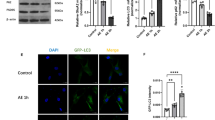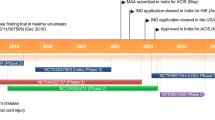Abstract
Tanshinone I (TsI), a lipophilic diterpene extracted from Danshan (Radix Salvia miltiorrhizae), exerts neuroprotection in cerebrovascular diseases including transient ischemic attack. In this study, we examined effects of TsI on cell proliferation and neuronal differentiation in the subgranular zone (SGZ) of the mouse dentate gyrus (DG) using Ki-67, BrdU and doublecortin (DCX) immunohistochemistry. Mice were treated with 1 and 2 mg/kg TsI for 28 days. In the 1 mg/kg TsI-treated-group, distribution patterns of BrdU, Ki-67 and DCX positive (+) cells in the SGZ were similar to those in the vehicle-treated-group. However, in the 2 mg/kg TsI-treated-group, double labeled BrdU+/NeuN+ cells, which are mature neurons, as well as Ki-67+, DCX+ and BrdU+ cells were significantly increased compared with those in the vehicle-treated-group. On the other hand, immunoreactivities and protein levels of Wnt-3, β-catenin and serine-9-glycogen synthase kinase-3β (p-GSK-3β), which are related with morphogenesis, were significantly increased in the granule cell layer of the DG only in the 2 mg/kg TsI-treated-group. Therefore, these findings indicate that TsI can promote neurogenesis in the mouse DG and that the neurogenesis is related with increases of Wnt-3, p-GSK-3β and β-catenin immunoreactivities.





Similar content being viewed by others
References
Cameron HA, McKay R (1998) Stem cells and neurogenesis in the adult brain. Curr Opin Neurobiol 8:677–680
Cameron HA, McKay RD (2001) Adult neurogenesis produces a large pool of new granule cells in the dentate gyrus. J Comp Neurol 435:406–417
Gould E, Gross CG (2002) Neurogenesis in adult mammals: some progress and problems. J Neurosci 22:619–623
Heine VM, Maslam S, Joels M et al (2004) Prominent decline of newborn cell proliferation, differentiation, and apoptosis in the aging dentate gyrus, in absence of an age-related hypothalamus-pituitary-adrenal axis activation. Neurobiol Aging 25:361–375
Kuhn HG, Dickinson-Anson H, Gage FH (1996) Neurogenesis in the dentate gyrus of the adult rat: age-related decrease of neuronal progenitor proliferation. J Neurosci 16:2027–2033
Rao MS, Hattiangady B, Abdel-Rahman A et al (2005) Newly born cells in the ageing dentate gyrus display normal migration, survival and neuronal fate choice but endure retarded early maturation. Eur J Neurosci 21:464–476
Bizon JL, Gallagher M (2003) Production of new cells in the rat dentate gyrus over the lifespan: relation to cognitive decline. Eur J Neurosci 18:215–219
Bizon JL, Lee HJ, Gallagher M (2004) Neurogenesis in a rat model of age-related cognitive decline. Aging Cell 3:227–234
van Praag H, Shubert T, Zhao C et al (2005) Exercise enhances learning and hippocampal neurogenesis in aged mice. J Neurosci 25:8680–8685
Bernal GM, Peterson DA (2004) Neural stem cells as therapeutic agents for age-related brain repair. Aging Cell 3:345–351
Ren Y, Houghton PJ, Hider RC et al (2004) Novel diterpenoid acetylcholinesterase inhibitors from Salvia miltiorhiza. Planta Med 70:201–204
Nizamutdinova IT, Lee GW, Son KH et al (2008) Tanshinone I effectively induces apoptosis in estrogen receptor-positive (MCF-7) and estrogen receptor-negative (MDA-MB-231) breast cancer cells. Int J Oncol 33:485–491
Ren ZH, Tong YH, Xu W et al (2010) Tanshinone II A attenuates inflammatory responses of rats with myocardial infarction by reducing MCP-1 expression. Phytomedicine 17:212–218
Tang C, Xue H, Bai C et al (2010) The effects of Tanshinone IIA on blood-brain barrier and brain edema after transient middle cerebral artery occlusion in rats. Phytomedicine 17:1145–1149
Zhou GY, Zhao BL, Hou JW et al (1999) Protective effects of sodium tanshinone IIA sulphonate against adriamycin-induced lipid peroxidation in mice hearts in vivo and in vitro. Pharmacol Res 40:487–491
Yu H, Yao L, Zhou H et al (2014) Neuroprotection against Abeta25-35-induced apoptosis by Salvia miltiorrhiza extract in SH-SY5Y cells. Neurochem Int 75:89–95
Wang X, Morris-Natschke SL, Lee KH (2007) New developments in the chemistry and biology of the bioactive constituents of Tanshen. Med Res Rev 27:133–148
Guo C, Yin Y, Duan J et al (2015) Neuroprotective effect and underlying mechanism of sodium danshensu [3-(3,4-dihydroxyphenyl) lactic acid from Radix and Rhizoma Salviae miltiorrhizae = Danshen] against cerebral ischemia and reperfusion injury in rats. Phytomedicine 22:283–289
Hugel HM, Jackson N (2014) Danshen diversity defeating dementia. Bioorg Med Chem Lett 24:708–716
Park JH, Park OK, Yan B et al (2014) Neuroprotection via maintenance or increase of antioxidants and neurotrophic factors in ischemic gerbil hippocampus treated with tanshinone I. Chin Med J (Engl) 127:3396–3405
Zhang XZ, Qian SS, Zhang YJ et al (2016) Salvia miltiorrhiza: a source for anti-Alzheimer’s disease drugs. Pharm Biol 54:18–24
Guo G, Li B, Wang Y et al (2010) Effects of salvianolic acid B on proliferation, neurite outgrowth and differentiation of neural stem cells derived from the cerebral cortex of embryonic mice. Sci China Life Sci 53:653–662
Zhang N, Kang T, Xia Y et al (2012) Effects of salvianolic acid B on survival, self-renewal and neuronal differentiation of bone marrow derived neural stem cells. Eur J Pharmacol 697:32–39
Cadigan KM, Nusse R (1997) Wnt signaling: a common theme in animal development. Genes Dev 11:3286–3305
David MD, Canti C, Herreros J (2010) Wnt-3a and Wnt-3 differently stimulate proliferation and neurogenesis of spinal neural precursors and promote neurite outgrowth by canonical signaling. J Neurosci Res 88:3011–3023
Lie DC, Colamarino SA, Song HJ et al (2005) Wnt signalling regulates adult hippocampal neurogenesis. Nature 437:1370–1375
Qu Q, Sun G, Li W et al (2010) Orphan nuclear receptor TLX activates Wnt/beta-catenin signalling to stimulate neural stem cell proliferation and self-renewal. Nat Cell Biol 12:31–40 sup pp 31-39
Valvezan AJ, Klein PS (2012) GSK-3 and Wnt signaling in neurogenesis and bipolar disorder. Front Mol Neurosci 5:1
Devi TS, Singh LP, Hosoya K et al (2011) GSK-3beta/CREB axis mediates IGF-1-induced ECM/adhesion molecule expression, cell cycle progression and monolayer permeability in retinal capillary endothelial cells: implications for diabetic retinopathy. Biochim Biophys Acta 1812:1080–1088
Daugherty RL, Gottardi CJ (2007) Phospho-regulation of β-catenin adhesion and signaling functions. Physiology (Bethesda) 22:303–309
Behrens J, von Kries JP, Kuhl M et al (1996) Functional interaction of β-catenin with the transcription factor LEF-1. Nature 382:638–642
Park JH, Park O, Cho JH et al (2014) Anti-inflammatory effect of tanshinone I in neuroprotection against cerebral ischemia-reperfusion injury in the gerbil hippocampus. Neurochem Res 39:1300–1312
Brown J, Cooper-Kuhn CM, Kempermann G et al (2003) Enriched environment and physical activity stimulate hippocampal but not olfactory bulb neurogenesis. Eur J Neurosci 17:2042–2046
Couillard-Despres S, Winner B, Schaubeck S et al (2005) Doublecortin expression levels in adult brain reflect neurogenesis. Eur J Neurosci 21:1–14
Chen BH, Yan BC, Park JH et al (2013) Aripiprazole, an atypical antipsychotic drug, improves maturation and complexity of neuroblast dendrites in the mouse dentate gyrus via increasing superoxide dismutases. Neurochem Res 38:1980–1988
Lee TH, Lee CH, Kim IH et al (2012) Effects of ADHD therapeutic agents, methylphenidate and atomoxetine, on hippocampal neurogenesis in the adolescent mouse dentate gyrus. Neurosci Lett 524:84–88
Franklin KBJ, Paxinos G (1997) The mouse brain in stereotaxic coordinates. Academic Press, San Diego 186 p. of plates
Choi JH, Yoo KY, Lee CH et al (2012) Comparison of neurogenesis in the dentate gyrus between the adult and aged gerbil following transient global cerebral ischemia. Neurochem Res 37:802–810
Christie BR, Cameron HA (2006) Neurogenesis in the adult hippocampus. Hippocampus 16:199–207
Eriksson PS (2003) Neurogenesis and its implications for regeneration in the adult brain. J Rehabil Med 41(Suppl):17–19
Eriksson PS, Perfilieva E, Bjork-Eriksson T et al (1998) Neurogenesis in the adult human hippocampus. Nat Med 4:1313–1317
Chan M, Chow C, Hamson DK et al (2014) Effects of chronic oestradiol, progesterone and medroxyprogesterone acetate on hippocampal neurogenesis and adrenal mass in adult female rats. J Neuroendocrinol 26:386–399
Gould E, Beylin A, Tanapat P et al (1999) Learning enhances adult neurogenesis in the hippocampal formation. Nat Neurosci 2:260–265
van Praag H, Christie BR, Sejnowski TJ et al (1999) Running enhances neurogenesis, learning, and long-term potentiation in mice. Proc Natl Acad Sci USA 96:13427–13431
Yoo DY, Kim W, Yoo KY et al (2011) Grape seed extract enhances neurogenesis in the hippocampal dentate gyrus in C57BL/6 mice. Phytother Res 25:668–674
Hartgens F, Kuipers H (2004) Effects of androgenic-anabolic steroids in athletes. Sports Med 34:513–554
Cohen D, Segal M, Reiner O (2008) Doublecortin supports the development of dendritic arbors in primary hippocampal neurons. Dev Neurosci 30:187–199
Cameron HA, Woolley CS, McEwen BS et al (1993) Differentiation of newly born neurons and glia in the dentate gyrus of the adult rat. Neuroscience 56:337–344
Kim DH, Jeon SJ, Jung JW et al (2007) Tanshinone congeners improve memory impairments induced by scopolamine on passive avoidance tasks in mice. Eur J Pharmacol 574:140–147
Kim DH, Kim S, Jeon SJ et al (2009) Tanshinone I enhances learning and memory, and ameliorates memory impairment in mice via the extracellular signal-regulated kinase signalling pathway. Br J Pharmacol 158:1131–1142
Komiya Y, Habas R (2008) Wnt signal transduction pathways. Organogenesis 4:68–75
L’Episcopo F, Serapide MF, Tirolo C et al (2011) A Wnt1 regulated frizzled-1/β-catenin signaling pathway as a candidate regulatory circuit controlling mesencephalic dopaminergic neuron-astrocyte crosstalk: therapeutical relevance for neuron survival and neuroprotection. Mol Neurodegener 6:49
Chenn A, Walsh CA (2002) Regulation of cerebral cortical size by control of cell cycle exit in neural precursors. Science 297:365–369
Gulacsi AA, Anderson SA (2008) Beta-catenin-mediated Wnt signaling regulates neurogenesis in the ventral telencephalon. Nat Neurosci 11:1383–1391
Zechner D, Fujita Y, Hulsken J et al (2003) beta-Catenin signals regulate cell growth and the balance between progenitor cell expansion and differentiation in the nervous system. Dev Biol 258:406–418
Luu HH, Zhang R, Haydon RC et al (2004) Wnt/β-catenin signaling pathway as a novel cancer drug target. Curr Cancer Drug Targets 4:653–671
Ciani L, Salinas PC (2005) WNTs in the vertebrate nervous system: from patterning to neuronal connectivity. Nat Rev Neurosci 6:351–362
Bielen H, Houart C (2014) The Wnt cries many: Wnt regulation of neurogenesis through tissue patterning, proliferation, and asymmetric cell division. Dev Neurobiol 74:772–780
Yu JM, Kim JH, Song GS et al (2006) Increase in proliferation and differentiation of neural progenitor cells isolated from postnatal and adult mice brain by Wnt-3a and Wnt-5a. Mol Cell Biochem 288:17–28
Gao Q, Jeon SJ, Jung HA et al (2015) Nodakenin enhances cognitive function and adult hippocampal neurogenesis in mice. Neurochem Res 40:1438–1447
Kim WY, Zhou FQ, Zhou J et al (2006) Essential roles for GSK-3s and GSK-3-primed substrates in neurotrophin-induced and hippocampal axon growth. Neuron 52:981–996
Acknowledgments
The authors would like to thank Mr. Seung Uk Lee for his technical help in this study. This work was supported by the Bio-Synergy Research Project (NRF-2015M3A9C4076322) of the Ministry of Science, ICT and Future Planning through the National Research Foundation, and by Hallym University Research Fund, 2015 (HRF-201509-015).
Author information
Authors and Affiliations
Corresponding authors
Ethics declarations
Conflict of interest
The authors declare that they have no conflict of interest.
Human and Animal Rights Statement
The procedures for animal handling and care adhered to guidelines that are in compliance with the current international laws and policies (Guide for the Care and Use of Laboratory Animals, The National Academies Press, 8th Ed., 2011), and they were approved by the Institutional Animal Care and Use Committee (IACUC) at Kangwon National University (Approval No. KW-130424-1). All of the experiments were conducted to minimize the number of animals used and the suffering caused by the procedures used in the present study.
Additional information
Bai Hui Chen and Joon Ha Park have contributed equally to this article.
Rights and permissions
About this article
Cite this article
Chen, B.H., Park, J.H., Cho, J.H. et al. Tanshinone I Enhances Neurogenesis in the Mouse Hippocampal Dentate Gyrus via Increasing Wnt-3, Phosphorylated Glycogen Synthase Kinase-3β and β-Catenin Immunoreactivities. Neurochem Res 41, 1958–1968 (2016). https://doi.org/10.1007/s11064-016-1906-0
Received:
Revised:
Accepted:
Published:
Issue Date:
DOI: https://doi.org/10.1007/s11064-016-1906-0




